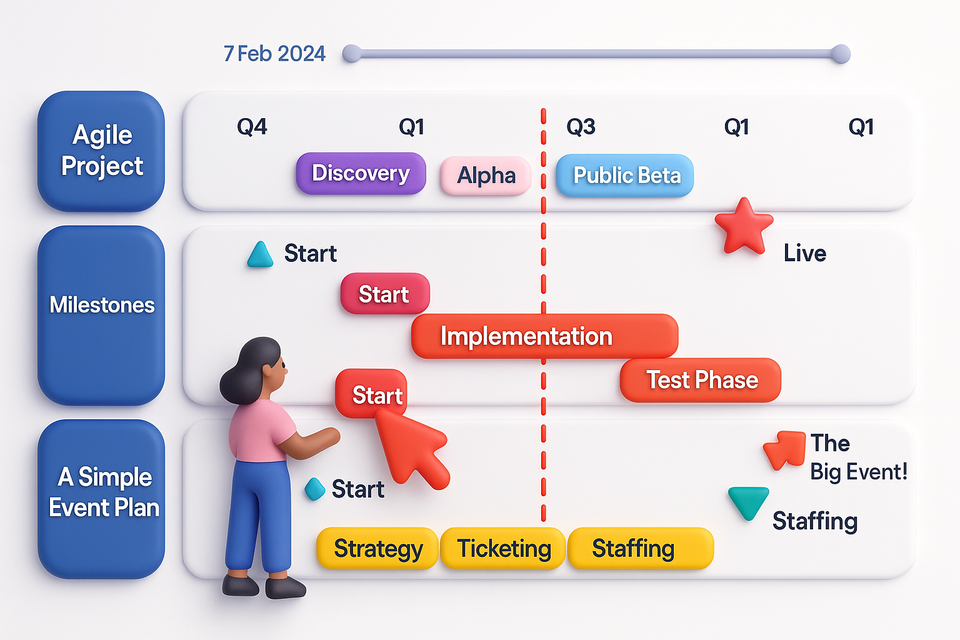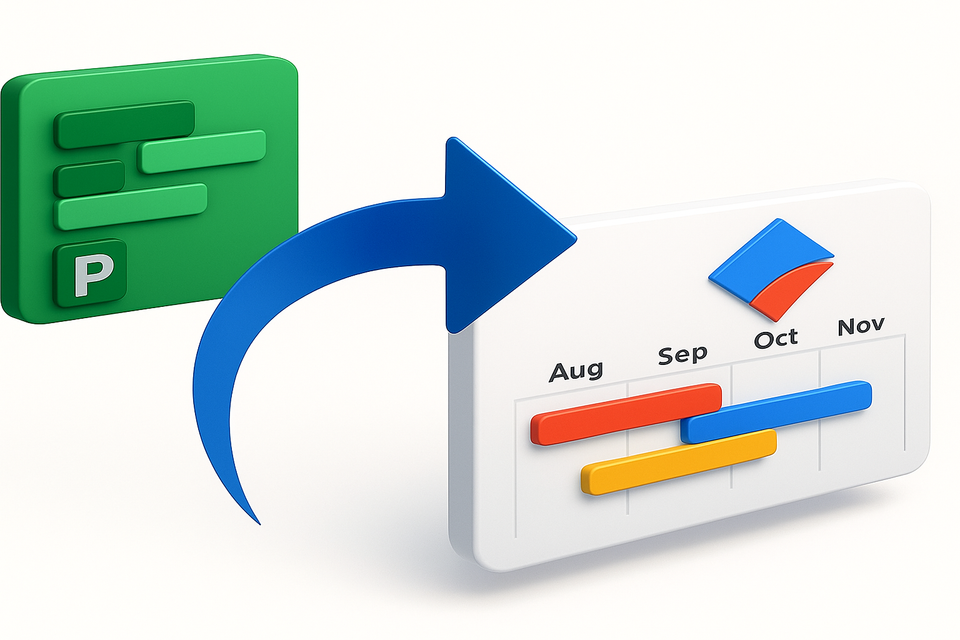Creating an Effective Project Timeline
Learn how to create an effective project timeline with these essential steps, including defining scope, estimating time, and allocating resources.

Ever found yourself staring at a mountain of project tasks wondering how they'll possibly fit into your limited timeframe? You're not alone. Managing project timelines can feel like juggling flaming torches—exhilarating yet terrifying. By the end of this guide, however, you'll see timeline creation as less of a daunting challenge and more of a strategic advantage that guides your projects to predictable success.
Understanding the Essence of Project Timelines
At its core, a project timeline is the visual backbone of your project plan. It maps out the start and end dates of all activities, creating a sequential roadmap that keeps everyone aligned.
For your timeline to serve as a trusted ally rather than a constant source of stress, it must incorporate several critical elements:
- A clearly defined project scope
- Realistic time estimates
- Properly identified dependencies
- Strategic resource allocation
- Proactive risk management
When these elements work in harmony, your project stands a significantly better chance of meeting its objectives without unexpected disruptions.

Step 1: Define Your Project Scope With Precision
Before diving into tasks and deadlines, take a step back to gain absolute clarity on your project's boundaries. Defining scope is like establishing the rules of engagement—it ensures everyone understands what's included and what isn't, preventing misunderstandings and scope creep from the outset.
To effectively capture your scope:
- Document specific objectives and deliverables
- Outline constraints (time, budget, resources)
- Confirm alignment with stakeholder expectations
- Get formal approval on these parameters
This foundation becomes your north star throughout the project lifecycle.
Step 2: Break Down Tasks Into Manageable Components
With your scope firmly established, it's time to get granular. Collaborate with your team to identify all requirements and transform them into actionable tasks.
Effective task breakdown involves:
- Listing major deliverables
- Decomposing these into smaller, measurable components
- Assigning clear ownership to each task
- Documenting acceptance criteria
This detailed view provides greater control and visibility, setting the stage for realistic scheduling while clarifying responsibilities across your team.
Step 3: Create Accurate Time Estimates and Map Dependencies
Now comes the critical exercise of determining how long each task will take. Accuracy here can make or break your timeline, so leverage historical data whenever possible. If similar tasks typically took three days previously, that's likely a reliable benchmark—unless circumstances have significantly changed.
When estimating:
- Consult team members who will perform the work
- Include buffer time for unforeseen challenges (15-20% is often reasonable)
- Document assumptions that impact your estimates
Simultaneously, map out dependencies between tasks. Understanding which activities must be completed before others can begin helps you sequence work logically, preventing bottlenecks and idle time. Visualise these connections to identify your critical path—the sequence of dependent tasks that determine your minimum project duration.
Step 4: Allocate Resources Strategically
With tasks, estimates, and dependencies defined, focus on who will execute each component. Strategic resource allocation considers:
- Individual skills and expertise
- Current workloads and availability
- Learning curves for new team members
- Access to necessary tools and equipment
Avoid the common pitfall of over-allocation, where team members are assigned more work than they can realistically complete. This leads to burnout, quality issues, and inevitable timeline slippage. Instead, aim for balanced workloads that maintain productivity without sacrificing quality or team wellbeing.

Step 5: Visualise Your Timeline With Precision
Now it's time to synthesise all this information into a cohesive visual representation. Whether you choose a Gantt chart, Kanban-board, or another visualisation tool, ensure it clearly displays:
- Task durations
- Start and end dates
- Dependencies between activities
- Resource assignments
- Milestones and key deliverables
Your visualization should strike a balance between detail and clarity. It must provide enough information to guide day-to-day work while remaining accessible enough that stakeholders can quickly grasp the overall project flow.
Step 6: Monitor Actively and Adapt Intelligently
Even the most meticulously crafted timeline requires ongoing attention during execution. Projects rarely unfold exactly as planned, making regular monitoring and adaptive management essential.
Implement a rhythm of:
- Weekly progress reviews against baseline
- Early identification of potential delays
- Proactive adjustment of subsequent activities
- Clear communication of changes to all stakeholders
Remember that timeline adjustments aren't failures—they're evidence of responsive project management. When changes are necessary, document them thoroughly alongside the rationale for future reference!

Leveraging Technology for Timeline Excellence
Today's project management landscape offers powerful technological solutions that dramatically streamline timeline creation and management. Modern tools like Asana, Monday.com, or Microsoft Project provide:
- Intuitive visualisation capabilities
- Automated dependency management
- Resource levelling algorithms
- Real-time progress tracking
- Collaborative features for team input
This integration enables real-time dashboards and automated reporting that transform raw data into actionable insights, freeing you to focus on strategic decisions rather than administrative tasks.
How Traqplan Makes Project Timelines Easier
Today's project management landscape offers powerful technological solutions that dramatically streamline timeline creation and management. Modern tools like Asana, Monday.com, or Microsoft Project provide intuitive visualisation capabilities, but for teams seeking a more specialised approach, Our Traqplan app offers a comprehensive timeline management solution. Traqplan stands out with its intuitive drag-and-drop interface that makes timeline adjustments effortless. The platform's reporting tools transform complex timeline data into clear, actionable insights. By integrating Traqplan with your existing workflows, you can eliminate the administrative burden of timeline management and focus on the strategic decisions that drive project success.
Creating an effective project timeline requires a mix of strategic planning, team effort, and the right technology. With these steps, you’re now armed and ready to tackle that daunting yet rewarding project timeline. Remember, it’s not about making the perfect timeline. It’s about creating a roadmap that helps guide your team and project to the finish line successfully. So, go ahead, plot your course, and let that timeline lead your project to new heights!




